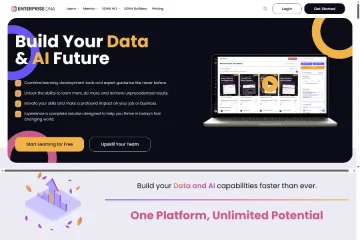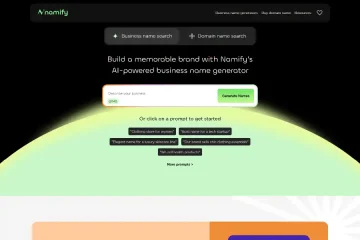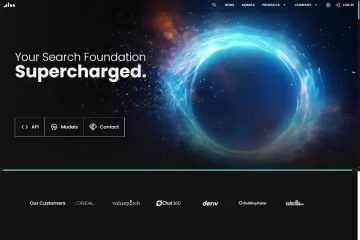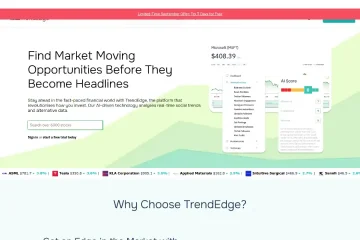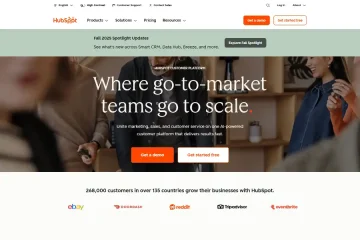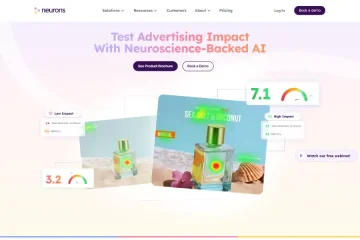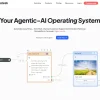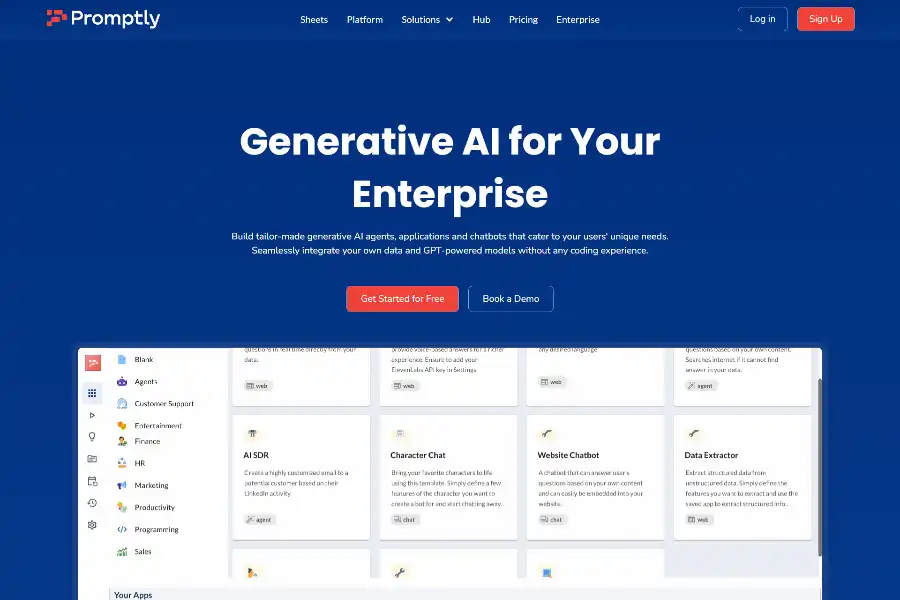
Promptly: The Definitive Guide to the No-Code Generative-AI Platform for Enterprises
Introduction: Why Promptly Matters Now
The race to operationalize generative AI has moved from “interesting experiment” to “mission-critical capability.” Yet most organizations still struggle with three recurring bottlenecks: scarce engineering talent, fragmented tooling, and uncertain ROI. Promptly positions itself at the intersection of these pain points by packaging large-language-model (LLM) power into a no-code, enterprise-grade environment. In the next 1,500-plus words we will dissect the platform from silicon to strategy—unpacking its technical architecture, business model, real-world deployments, competitive edge, and future roadmap.
1. Product Snapshot: What Promptly Actually Is
Promptly is a cloud-native platform that lets both developers and non-developers design, deploy, and scale AI apps—chatbots, content generators, Slack bots, Discord bots, and more—without writing backend code. Think of it as a visual layer that abstracts away prompt engineering, vector storage, model orchestration, and API security, while still exposing hooks for deeper customization.
2. Technical Architecture Under the Hood
2.1 Model Chaining Layer
Rather than locking users into a single LLM provider, Promptly offers a “model chaining” engine that stitches together models from OpenAI, Anthropic, Cohere, Stability AI, Hugging Face, and others. Users drag-and-drop processors—text summarizers, image generators, code copilots—into a DAG (directed acyclic graph). Each node can route to a different provider, enabling hybrid workflows (e.g., GPT-4 for reasoning + Stable Diffusion XL for image creation) without worrying about token limits or rate throttling.
2.2 Retrieval-Augmented Generation (RAG) Pipelines
Promptly’s vector database can ingest 40-plus file types: PDFs, YouTube transcripts, Google Drive folders, Notion exports, audio recordings, and entire sitemaps. Data is chunked, embedded, and indexed in real time. The retrieval stage uses a hybrid search strategy—dense vector similarity plus traditional keyword BM25—to maximize recall. Enterprise customers can opt for a self-hosted vector database (Postgres + pgvector or Milvus) so that sensitive data never leaves their VPC.
2.3 Streaming & Event-Driven APIs
All apps expose both REST and WebSocket endpoints. The streaming APIs push server-sent events (SSEs) so front-end teams can render token-by-token outputs, delivering the “ChatGPT-like” UX that users now expect. The platform auto-scales with Kubernetes under the hood; SOC 2 Type II controls cover authentication, encryption in transit (TLS 1.3), and encryption at rest (AES-256).
3. Functional Modules: What You Can Build Today
3.1 Template Library
Over 120 pre-built templates span marketing copy generation, FAQ bots, HR policy assistants, SQL-to-natural-language translators, and even Midjourney-style art bots. Each template exposes configuration knobs—temperature, max tokens, system prompts, moderation thresholds—via a simple web form.
3.2 Embeddable Widgets
A single line of JavaScript embeds a fully branded chat widget on any website. CSS variables allow designers to match fonts and colors without touching the codebase. The same widget can be re-skinned and redeployed across multiple landing pages for A/B testing.
3.3 Collaboration & Governance
At the organization tier, Promptly introduces “App Spaces.” Owners can set role-based permissions (viewer, collaborator, admin), mandate SSO via SAML or OIDC, and route all prompts through a central audit log. Usage analytics surface token burn, cost per query, and user-satisfaction scores derived from thumbs-up/down feedback.
4. Pricing: From Free Sandbox to Enterprise VPC
- Free Tier: 100 credits/month, community support, public apps only.
- Pro: $49/month or $499/year; 5,000 credits, private apps, custom domains, API access.
- Team: $999/year for five seats; 50,000 credits, shared data connectors, priority email support.
- Enterprise: Custom contract; self-hosted vector DB, VPC deployment, white-label options, SOC 2 Type II attestation, and a dedicated CSM.
Credits are burned at variable rates: a GPT-3.5 query costs ~1 credit, while a GPT-4 32k query can consume 20 credits. Image generation via Stable Diffusion sits at ~5 credits per 512×512 render.
5. Market Applications: Five Industry Snapshots
5.1 E-Commerce & Retail
A Shopify Plus merchant used Promptly to ingest 3,000 SKUs and launch an AI stylist bot. The bot cross-sells outfits based on inventory levels and margin data, driving a 19 % uplift in average order value (AOV) within six weeks. The marketing team built and iterated on the bot without filing a single Jira ticket for engineering.
5.2 Healthcare
A telehealth provider embedded a HIPAA-compliant symptom checker on its patient portal. The app references CDC guidelines and the provider’s own knowledge base. Because the vector DB is self-hosted, Protected Health Information (PHI) never traverses third-party servers, satisfying compliance officers.
5.3 Financial Services
A regional bank created a “Regulatory Update Digest” bot that monitors SEC filings and internal policy documents. Relationship managers now receive plain-English summaries every morning. The bot reduced manual research time by 70 %, according to the bank’s COO.
5.4 SaaS & Developer Tools
A Series-B startup plugged Promptly’s streaming API into its IDE extension, turning natural-language comments into boilerplate code. The integration went live in two days, shortening developer onboarding for new frameworks.
5.5 Education
A K-12 district built a parent-facing chatbot that answers questions about bus schedules, lunch menus, and school policies. The district trained the model on PDFs scattered across Google Drive; the bot now handles 82 % of routine inquiries, freeing administrative staff.
6. Competitive Landscape: How Promptly Stacks Up
| Dimension | Promptly | LangFlow (Open Source) | Cohesive AI | Custom Stack |
|---|---|---|---|---|
| No-Code Builder | Yes | Limited UI | Yes | No |
| Self-Host Option | Enterprise | Always | No | DIY |
| Pre-Built Templates | 120+ | Community | 50+ | None |
| SOC 2 Type II | Yes | No | No | DIY |
| Cost at 10k Queries | ~$20 | Infra + DevOps | ~$30 | Variable |
Promptly’s key differentiator is the balance between no-code simplicity and enterprise security; most competitors either ignore governance or force users down a high-maintenance open-source path.
7. User Feedback: What the Community is Saying
On G2, Promptly holds a 4.7/5 rating from 180+ reviews. Users praise the “10-minute-to-first-bot” experience, while advanced developers note that the “Export to Python” button lets them escape the low-code sandbox when necessary. Common critiques center on credit transparency; some users want per-token metering instead of proprietary credits. The product team has responded with a granular usage dashboard scheduled for Q4.
8. Implementation Playbook: A 90-Minute Quick-Start
- Data Audit: Identify the top five knowledge silos (Notion, Google Drive, Confluence, PDFs, YouTube channels).
- Template Selection: Choose “Customer Support Bot” from the template gallery.
- Data Ingestion: Upload sources; the platform auto-chunks and embeds.
- Prompt Tuning: Adjust system prompt, temperature, and max tokens in the playground.
- Embed & Share: Copy the iframe snippet to your website; restrict domains to prevent abuse.
- Observe & Iterate: Use the built-in analytics to inspect failed queries and refine prompts.
Most teams achieve a functional prototype within an hour and a production-ready bot within a day.
9. Security, Compliance, and Trust
Beyond SOC 2 Type II, Promptly offers GDPR-ready Data Processing Agreements (DPAs), supports opt-out for model training, and has an opt-in EU-only data residency add-on. All embeddings can be deleted via a single API call, ensuring “right to be forgotten” compliance. Pen-testing results and encryption white-papers are available under NDA for Enterprise customers.
10. Roadmap: Where Promptly is Heading
Publicly disclosed items include:
- Multimodal Chains: Native support for vision-language models (e.g., GPT-4V) to ingest images and generate textual insights.
- Fine-Tuning Studio: A no-code UI to fine-tune open-source LLMs on proprietary data, scheduled for Q1 2025.
- Marketplace: A community hub where users can buy and sell custom templates and data connectors.
- Offline Mode: An Electron-based desktop client for air-gapped environments such as defense and healthcare R&D labs.
11. Strategic Recommendations for Decision Makers
If your organization is evaluating Promptly, consider a phased adoption:
- Week 1–2: Run a pilot using the Free tier to validate UX assumptions.
- Month 1: Upgrade to Pro, embed a customer-facing bot, and measure deflection rate.
- Quarter 1: Negotiate an Enterprise contract with self-hosted vector DB to scale across multiple departments while retaining data sovereignty.
Align success metrics with business KPIs—reduction in support tickets, increase in lead conversion, or faster policy compliance—rather than vanity AI metrics like perplexity.
Conclusion: The Verdict
Promptly succeeds because it abstracts the complexity of generative AI without diluting its power. Its modular architecture, SOC-grade security, and pragmatic pricing make it viable for both scrappy startups and Fortune 500 giants. As foundation models commoditize further, the moat will shift toward data orchestration and governance—areas where Promptly is already investing heavily. Expect the platform to become the “Vercel of AI apps”: the default place where ideas become shipped products at the speed of thought.

